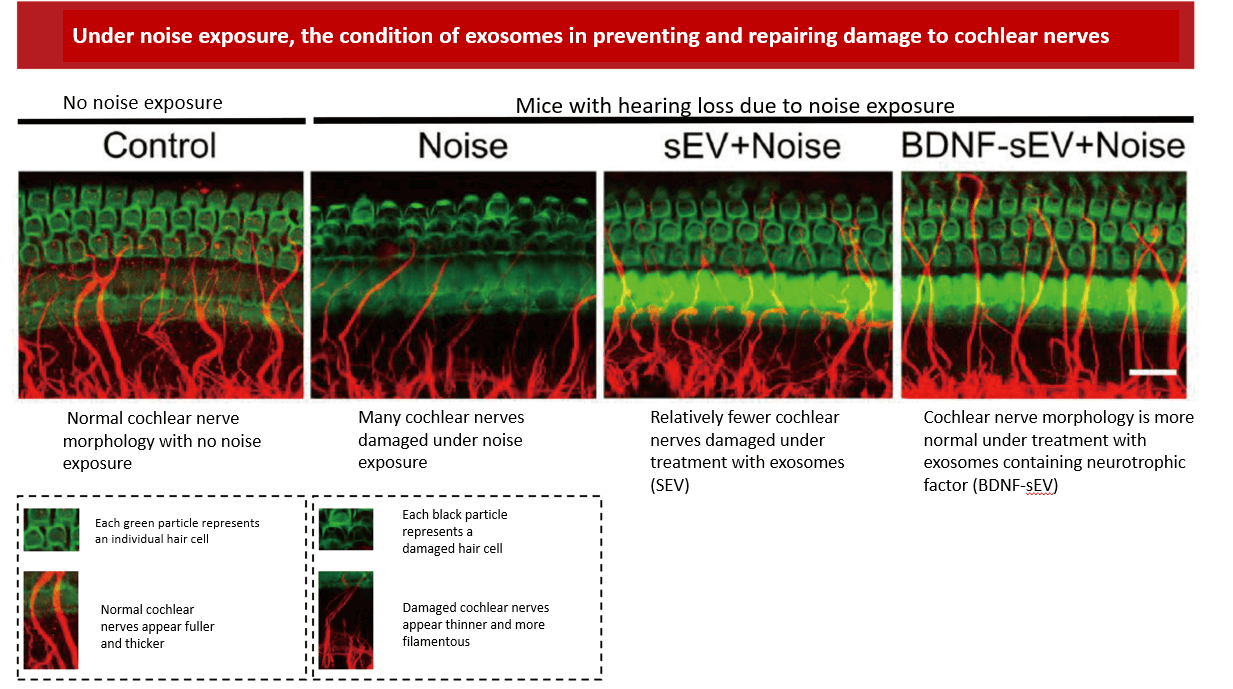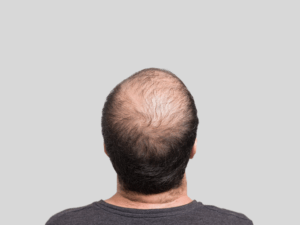Reference: Journal of Controlled Release〈BDNF-enriched small extracellular vesicles protect against noise-induced hearing loss in mice〉
Hearing loss is a prevalent and often underestimated global health issue affecting people of all ages. According to the World Health Organization’s “World Report on Hearing,” as of 2021, about one-fifth of the global population suffers from hearing impairment, a figure projected to rise to one-quarter by 2050.
Risk factors for hearing loss include ear infections, prolonged exposure to high-frequency noise, and unhealthy lifestyle habits, which can cause irreversible damage. In daily life, sounds enter the cochlea as vibrations, where they are transformed into auditory signals by hair cells and then transmitted by nerves. Damage to these cochlear hair cells and nerves can lead to permanent hearing impairment.
The cochlea contains a structure similar to the blood-brain barrier, known as the blood-labyrinth barrier (BLB), which prevents many large molecular drugs from treating the hair cells and cochlear nerves. However, advancements in nanotechnology within biomedical research have identified a type of nanoparticle—exosomes—that can potentially cross this barrier to treat hair cells and nerves.
The focus of this recent study is on exosomes wrapped with Brain-Derived Neurotrophic Factor (BDNF), which are used to aid in the repair of cochlear hair cells and nerves:
Researchers first isolated exosomes and encapsulated them with BDNF (referred to as BDNF-sEV). They then conducted animal experiments where mice were given BDNF-sEV through intravenous injections. The mice were subsequently exposed to a noisy environment to induce hearing loss, followed by another injection of BDNF-sEV.
After 14 days, the condition of the cochlear hair cells and nerves in the mice was assessed. The results showed that the mice’s hair cells and nerves were severely damaged after noise exposure. However, post-treatment with BDNF-sEV, the cochlear hair cells and nerves showed significant repair.
This study demonstrates the potential of exosomes in preventing and repairing hearing damage. Recent research also indicates that exosomes have performed well in nerve repair, suggesting that they could provide new hope for future clinical applications.
2024-05-24
Chronic Kidney Disease (CKD) is increasingly recognized as a significant health concern worldwide. According to a recent report in The Lancet Regional Health, as of 2022, between 9.1% and 13.4% of the global population suffers from CKD.A promising avenue for treating CKD, particularly in reducing
2024-04-24
Risk factors for hearing loss include ear infections, prolonged exposure to high-frequency noise, and unhealthy lifestyle habits, which can cause irreversible damage. In daily life, sounds enter the cochlea as vibrations, where they are transformed into auditory signals by hair cells and then transmitted by
2024-03-27
This groundbreaking study shines a light on the exosomes present in these muscle-secreted humoral factors. This compelling evidence underscores the potential of Myo-EVs in facilitating bone repair and restoring bone health, marking a significant stride in osteoporosis treatment.
2024-03-13
As the exploration of exosomes in clinical settings progresses, there's growing anticipation for their integration with existing treatments like Minoxidil and Finasteride. This innovative approach could herald a more comprehensive and effective solution for tackling male pattern baldness, promising a new era of hair loss
2024-02-02
Overexposure to UV rays stimulates the production of free radicals, leading to wrinkles, spots, and dullness. Therefore, it is essential to use sunscreen and engage in proper skincare to prevent and repair the signs of skin aging.
2024-01-05
Extracellular vesicles, including exosomes and microvesicles, are an important medium for intercellular communication, with nearly all cells secreting these vesicles. The research team compared aging muscle stem cells cultured with young serum to those with young serum depleted of extracellular vesicles, observing the impact of
2023-12-19
Biologically and medically speaking, immune cells activated after transplantation continuously attack hematopoietic tissues and ocular epithelial tissues, including the cornea, conjunctiva, and lacrimal glands, causing widespread inflammation.









